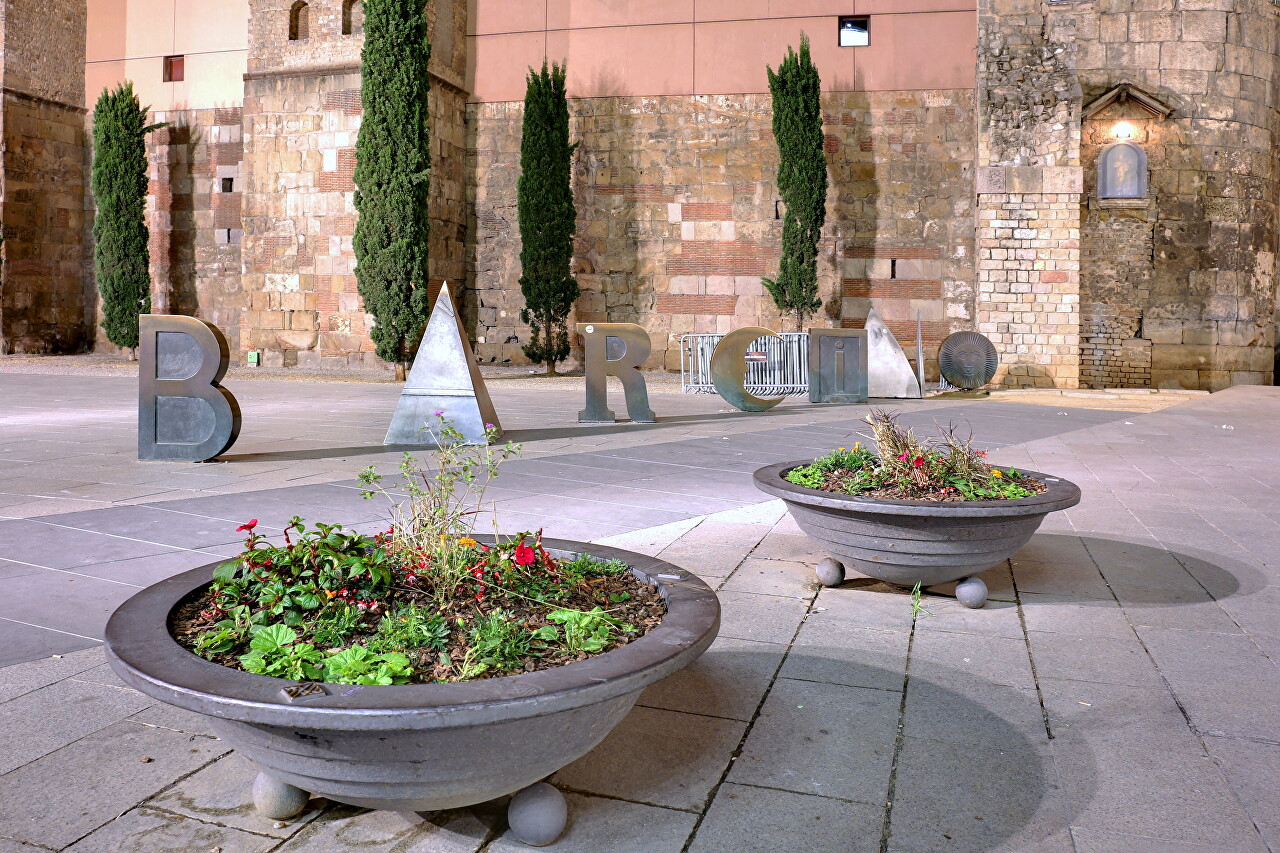Night Walk in Gothic Quarter
On my way back from Ribera, I crossed Via Laietana and found myself in the oldest part of the Gothic Quarter, the Plaça d'emili Vilanova. Here is the wall of the Roman fortress of Barcino, on which in the 14th century was built the Palace of Requesens (Palau Requesens), owned by the governor of Barcelona Galceran Requesens (Galceran de Requesens i de Santacoloma).
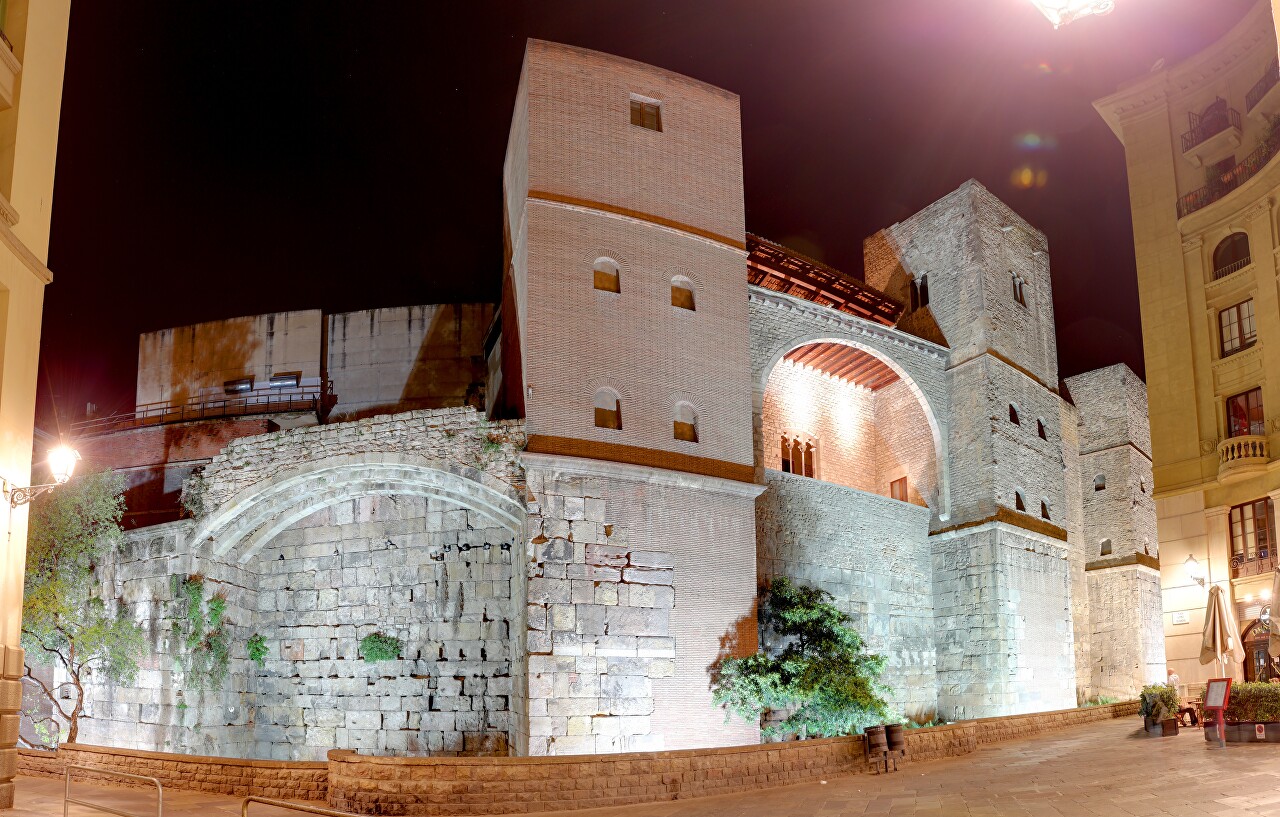
Then I followed the ancient towers to the Plaza de Ramon Berenguer el Gran. In the center of the square is an equestrian statue of the Count of Barcelona and Girona, who greatly expanded the Catalan possessions, mainly due to dynastic marriages.
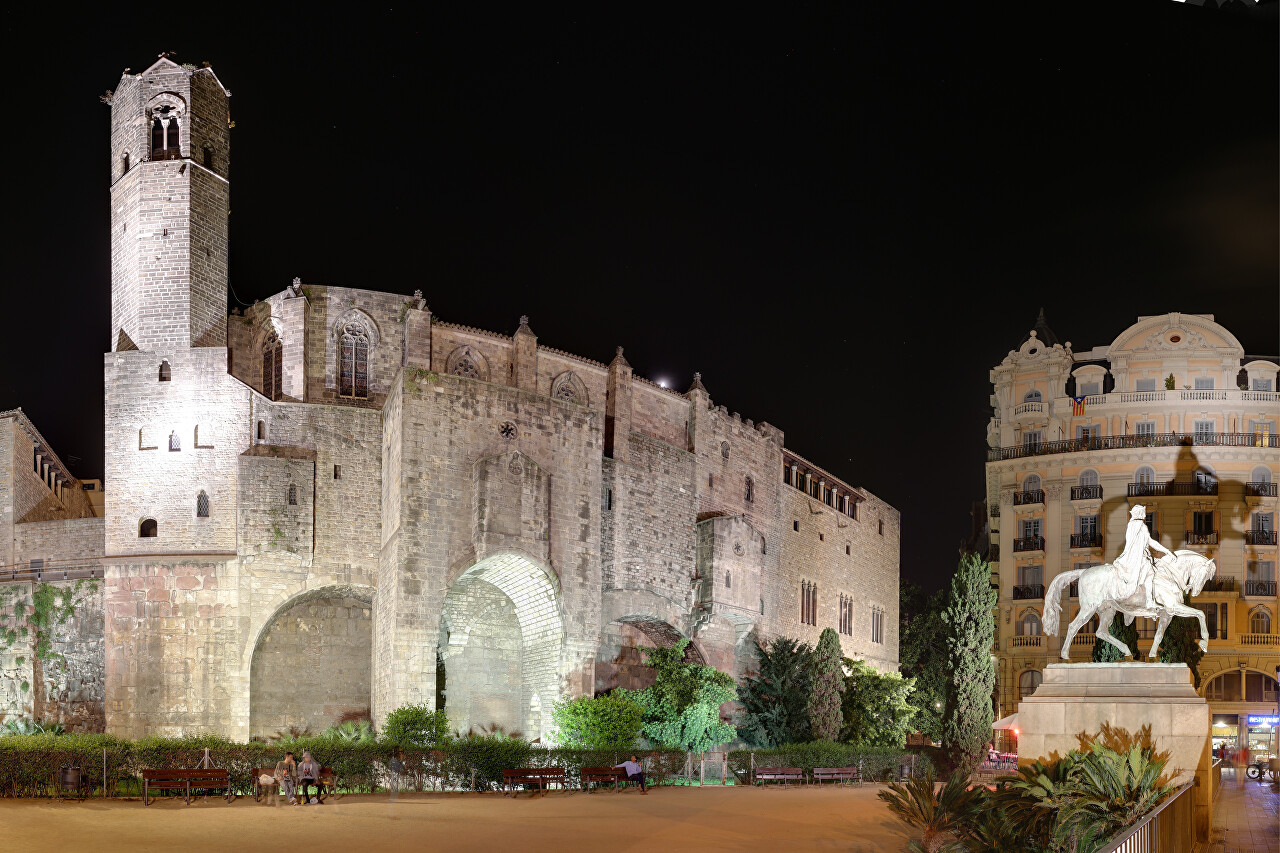
The square faces the north wall of the Grand Royal Palace (Palau Reial Major), which is formed by the royal chapel of St. Agatha, built in 1302.
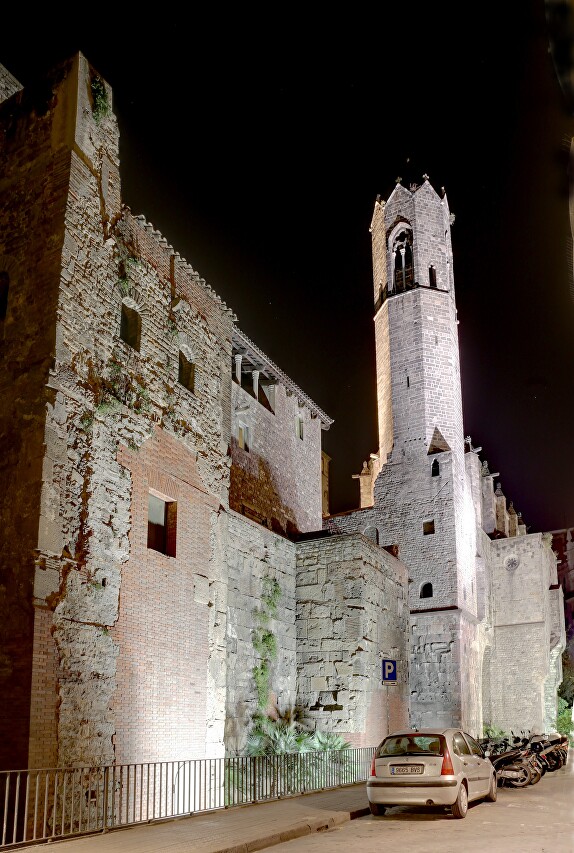
After walking another block, I found myself in the Plaza d'Antonio Maura, surrounded by monumental buildings in the Franco-Empire style. This residential building was built in 1940 and has 5 huge apartments per floor.
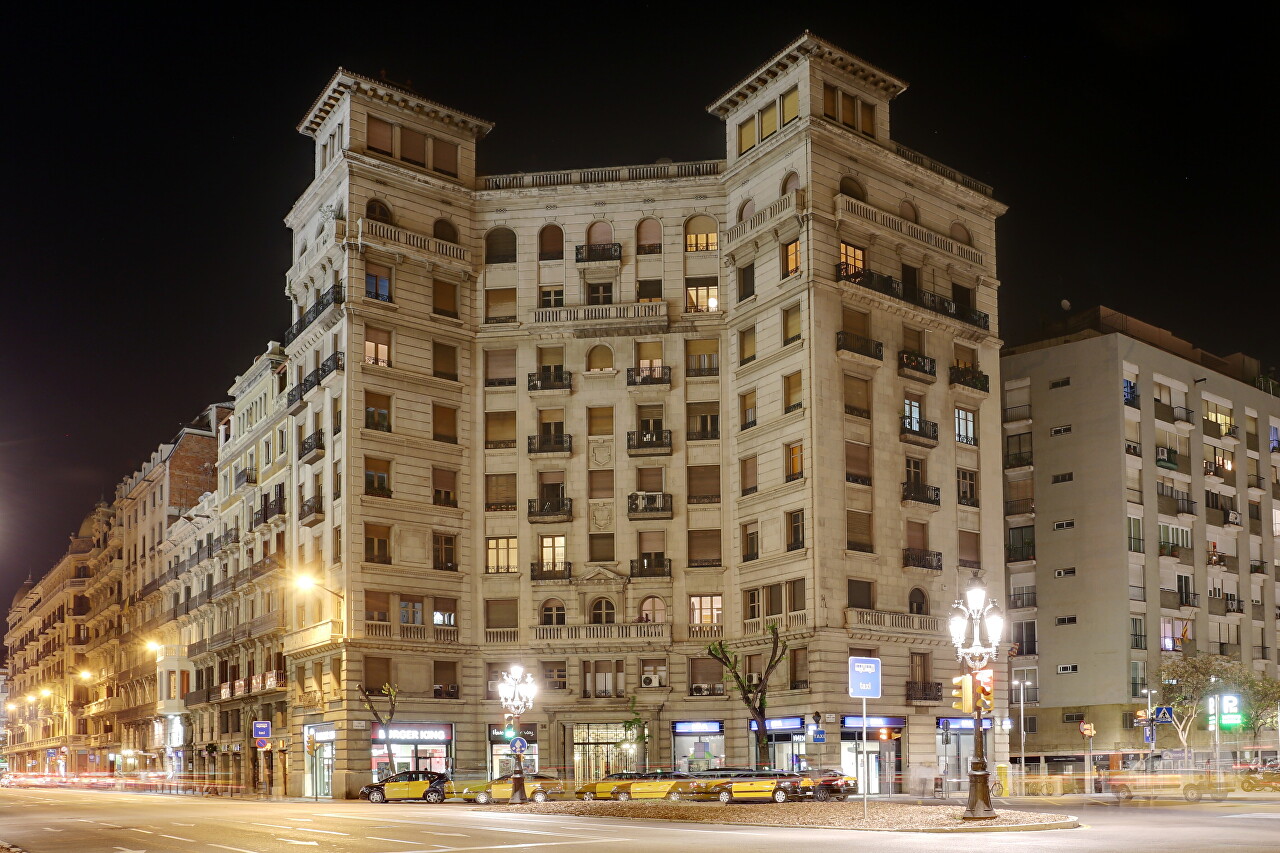
Opposite is the Catalunya Caixa Bank building, whose construction began in 1930, but was frozen during the Civil War and completed at its end, in 1939. Architects Jose Yárnoz Larrosa and Luis Menéndez-Pidal Alvarez.
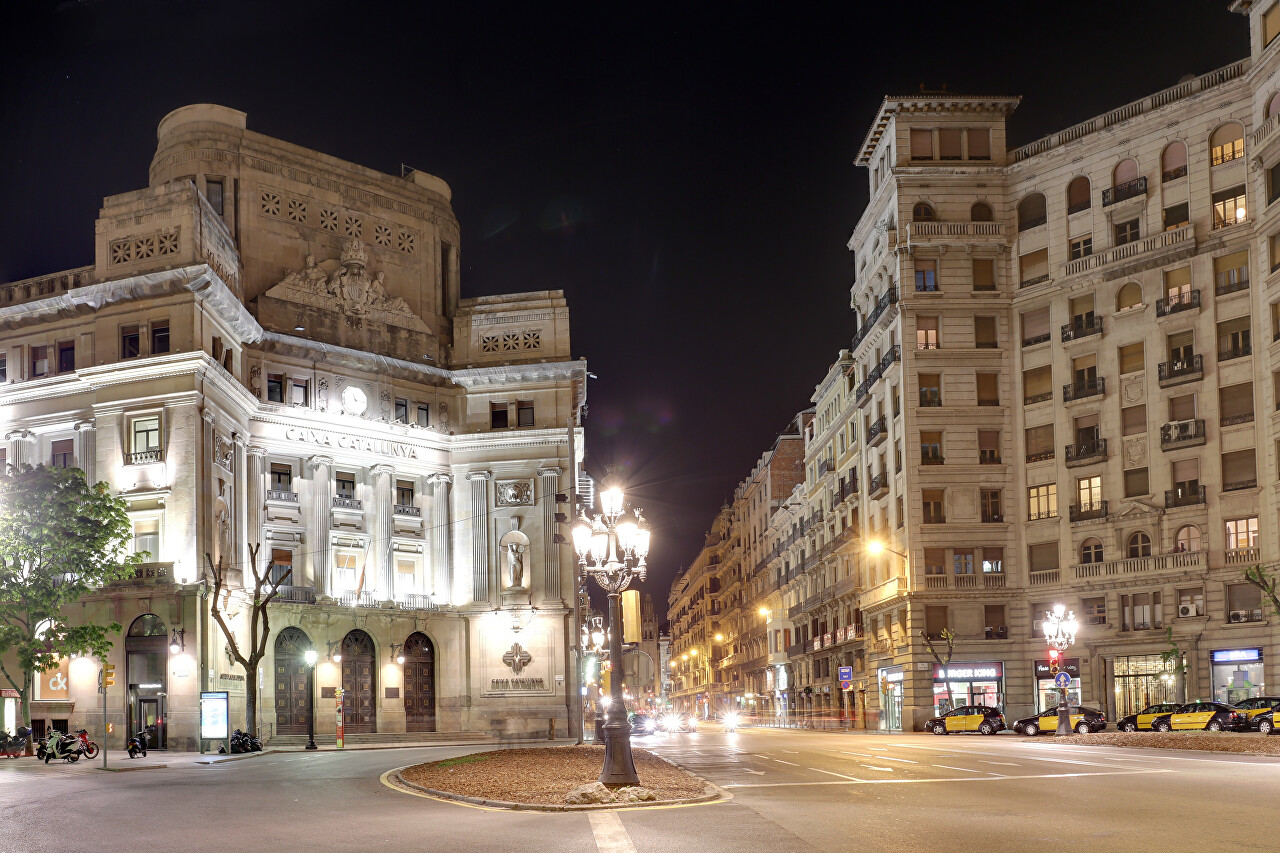
This is where the Avenida de la Catedral begins. In the front garden of Casa de Pia Almonia, where the Museum of religious art is located, you can see the metal sculpture "Choreography" (Coreografia) by Julio Nieto. The creation is clearly not related to the theme of the museum.
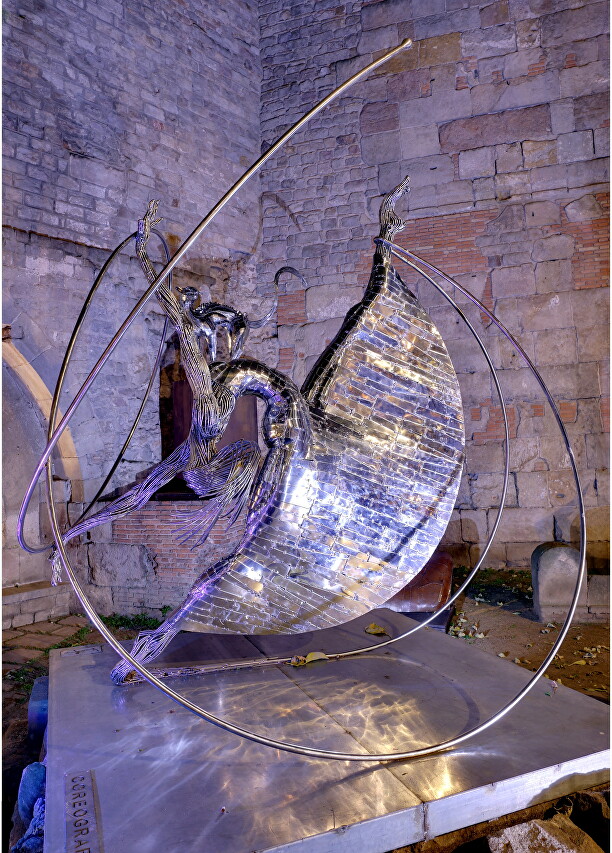
Today's walk will end at Pla de la Seu, where the Gothic spires of the Church of the Holy Cross and Saint Eulalia, better known as Barcelona Cathedral, tower. To the right is the archdeacon's house (Casa de l'ardiaca), built in the 15th-16th century on the foundations of a Roman wall.
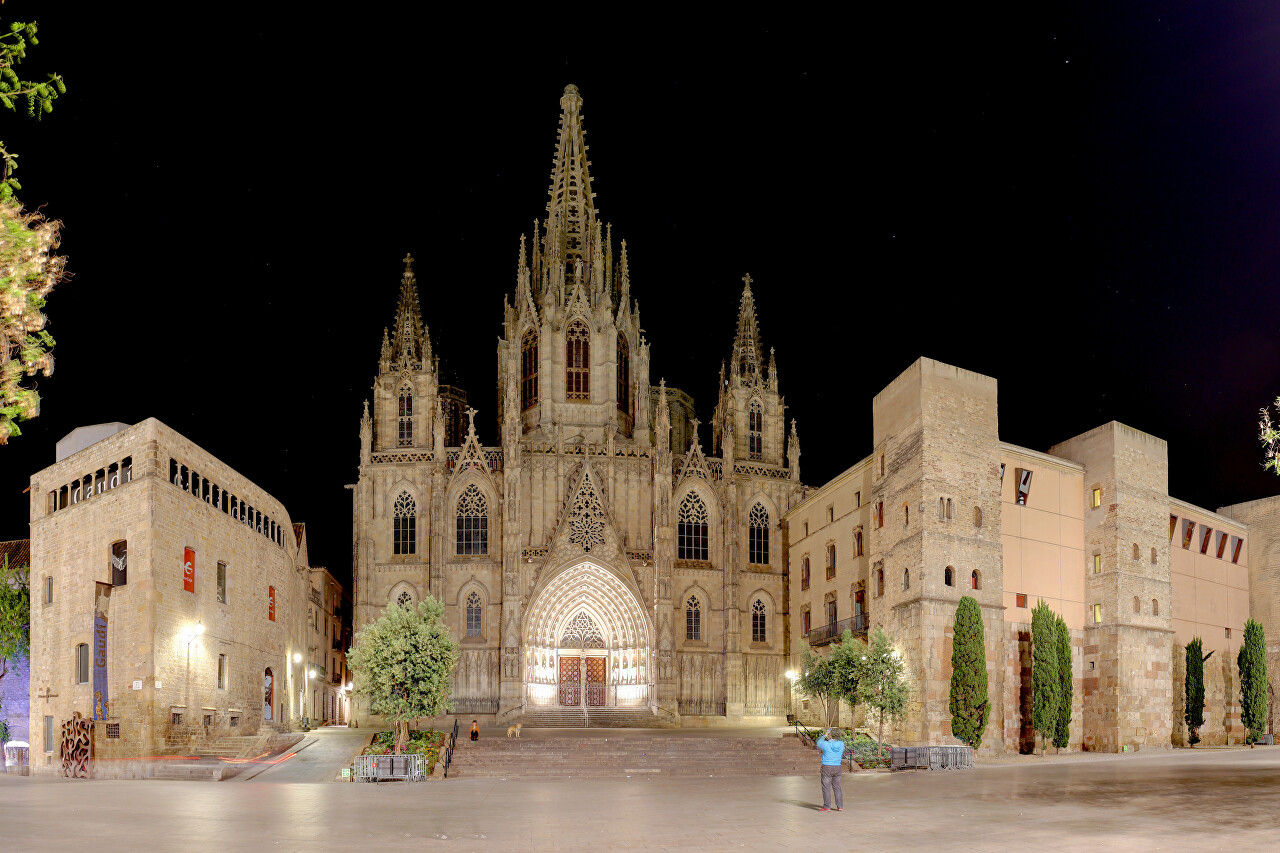
In front of the remains of the ancient wall, a sculpture group by Joan Brossa was unveiled in 1994, forming the word Barcino, the Roman name for Barcelona.
